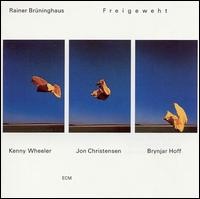
Daily Dose Of Jazz…
Rainer Brüninghaus was born on November 21, 1949 in Bad Pyrmont, Lower Saxony, Germany. From the age of nine he was educated in classical piano and founded his first jazz trio when he was 16. He studied sociology at the University of Cologne and music during the same time. In 1970, he founded the experimental jazz rock group Eiliff, which recorded two albums and one single.
In 1973, he joined the band of German jazz guitarist Volker Kriegel. From 1973 until 1985, he was a frequent guest in the jazz ensemble and the big band of Hessian Broadcasting Corporation. In 1975, with bassist Eberhard Weber and Charlie Mariano, he formed the band, Colours. Rainere played duo concerts with Manfred Schoof and in his quintet and big band.
In 1976, Brüninghaus first played a piano solo concert at the Heidelberg Jazz Days Festival. At the German Jazz Festival Frankfurt of 1978, he performed a suite of pieces lasting 50 minutes, which he composed as commissioned work for the festival.
The Eighties saw Brüninghaus working mainly as a bandleader, putting effort into his own projects, Freigeweht with Kenny Wheeler and Jon Christensen. He alsoe founded his own trio in which Markus Stockhausen and Fredy Studer played until the end of 1984.
John Abercrombie and Trilok Gurtu joined the band in 1985, and for some of the performances, Charlie Mariano, Hugo Read, and Jo Thönes played in the band. In 1988, Rainer began a long association with Jan Garbarek. He has written music for symphony orchestras, big bands, small ensembles, and solo piano, as well as for film and television.
He has also worked with Carla Bley, Bob Brookmeyer, Gary Burton, Bobby McFerrin, Jim Hall, Manu Katché, Albert Mangelsdorff, Paul McCandless, Alphonse Mouzon, Archie Shepp, and Steve Swallow.
He taught piano and music theory at the Akademie Remscheid, at the University of Cologne, and from 1990 to 1993 at the Hochschule (University) for Frankfurt University of Music and Performing Arts. He has published essays on music theory and was a member of the artistic advisory board for the Union of German Jazz Musicians.
>Pianist, composer and university teacher Rainer Brüninghaus, who has performed solo Grand Piano conerts, continues to perform and record.
More Posts: bandleader,composer,educator,history,instrumental,jazz,music,piano
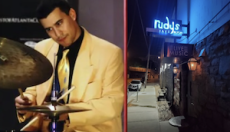
The Jazz Voyager
The Jazz Voyager is off to Nashville, Tennesse for a night of music at Rudy’s Jazz Room. The venue raises the city to the level of other great jazz cities like New York City, New Orleans, Chicago, Kansas City and many more, making the city fully live up to its name as Music City with a full fledged and accessible jazz club. They offer up a late-night atmosphere that is dark, warm, intimate, and eclectic with fine food, drinks and most of all wonderful jazz.
Hitting the hi-hat while leading the sextet is Dave Potter for one night of great music. With Miguel Alvarado on tenor saxophone, trombonist Desmond Ng, trumpeter Dr. Andrew Sioberg, Rob “El Ton” Linton on bass as well as pianists Martin Bejerano and Daniel Kuk playing separate nights.
Rudy’s Jazz Room is located in the Gulch at 809 Gleaves Street, 37203. For more information visit https://www.rudysjazzroom.com.
Tickets: $23.00
More Posts: adventure,club,drums,ensembles,genius,jazz,music,preserving,travel
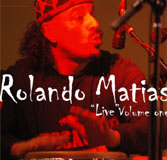
Daily Dose Of Jazz…
Rolando Matias was born on November 20, 1957 in Cupey Alto, San Juan, Puerto Rico. A self-taught musician, he applies his formal training as an architect into his musical education. He started playing percussion at a young age at the local Bembes, a neighborhood gathering where rumberos jam and improvise together.
Rolando has performed or recorded with Chuchito Valdez, Benny Maupin, Leon ..Ndugu.. Chadler, Azar Lawrence, Othello Molineaux, Mimi Fox, Bobby Matos, Bobby Sanabria, Bill Summers, Lenny Castro, Eddie “The Chief” Clearwater, Kenny Neal, Duke Robillard, Cleveland Roberto Ocasio, David Sanchez, and the list goes on and on.
His projects vary from Rolando Matias & The Afro-Rican Ensemble, Afro-Latin-BeBop, Latin-Soulsa & Jazz RM:Intrin-x-ico, Afro-Jazz Rolando Matias & Cuba-son Salsa na ma!, and Afro-Latin-Hip/Hop.
Percussionist Rolando Matias, who plays congas, bongos, cowbells, bata drums, hand percussion, claves, guiros, and maracas, etc, continues to perform and explore music from the African Diaspora.
More Posts: bandleader,history,instrumental,jazz,music,percussion
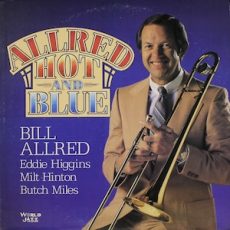
Daily Dose Of Jazz…
Bill Allred was born in Rock Island, Illinois on November 19, 1936 into a family where his father played the Streckfus Steamboat lines on the Mississippi.
He formed a Dixieland band while still in high school. In 1954 he enlisted in the Navy, playing with Navy bands throughout his tour and was excited to be part of a big band for the first time. Returning home he married, pursued a regular career and continued to gig.
His big break came in 1970 when, out of 2500 auditioning musicians, he was chosen to be part of the Disney World Band on the park’s opening day in 1970. While at Disney he formed a trad band called The Reedy Creek Jazz Band. The band was noticed by Bob Snow, who recruited him to put together a show and band for the Rosie O’Grady’s Goodtime Jazz Emporium, that ran for 25 years.
In 1979, Bill formed the Continental Jazz Band for a Roaring Twenties club in Fort Lauderdale, Florida. “Auntie Mame’s” later won the Carbonell Award for Best Cabaret Show in South Florida.
Trombonist and bandleader Bill Allred, who was a vital component of the classic jazz scene in South Florida, died on February 1, 2024 at the age of 87.
More Posts: bandleader,history,instrumental,jazz,music,trombone
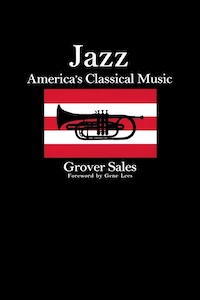
On The Bookshelf
Jazz: America’s Classical Music | Grover Sales
Jazz critic Grover Sales takes the reader on a journey of introduction to the history, complexity and criticism of the music in Jazz: America’s Classical Music. This book illustrated with photographs, is considered a classic text and an ideal guide for both beginners and those familiar with the genre.
In an engaging and conversational style, the renowned jazz teacher tells of the lives and music of the greats like Ellington, Tatum, Hawkins, Coltrane, Parker, Hines, Goodman, Armstrong, and many others. He does this with a mix of important facts, fascinating anecdotes, and brilliant interpretations.
The author was a prominent figure in the jazz world, he taught at Stanford University and worked as the publicity director for the Monterey Jazz Festival.
Jazz: 1984 | Grover Sales
Prentiss-Hall Press



